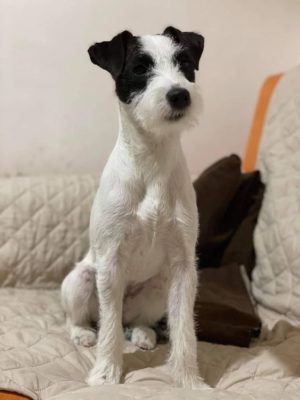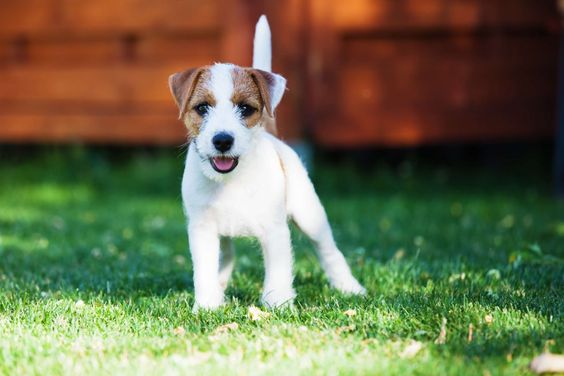Parson Russell Terrier
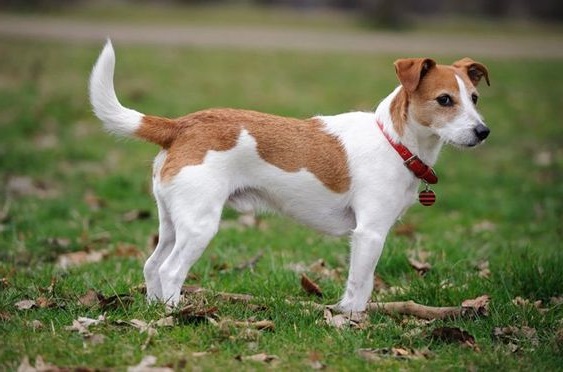
The Parson Russell Terrier is a very energetic and active dog. It is common for them to bark at another dog, scare the cat, and fool around. It is better not to get people who are not used to an active lifestyle. These dogs are true extroverts and always want to be in the spotlight. They are confident enough and are not afraid of anything.
Table of Contents
Breed Information
| Another Name | Parson, Parson Jack Russell Terrier |
| Origin | England |
| Height | Males 36 cm Females 33 cm |
| Weight | 6-8 kg |
| Fur | Short |
| Color | White, white with black, lemon, or pale marks |
| Lifespan | 11-15 years |
| FCI Classification | Terriers |
| Group | Dogs for kids, dogs for the apartment |
| Price | $300-500 |
Breed Photos
Origin History
A relative of the dog is thought to be the Jack Russell Terrier. Thanks to Jack Russell, the breed began its existence, a priest who was very fond of riding and hunting. One day he set a goal to breed a hunting dog that would help him on the hunt. He began crossbreeding different terriers, and that’s how the Parson Russell Terrier came about.
This dog had an excellent sense of smell and small size, which allowed it to find and climb into burrows without any problems. Thanks to its long legs, the Parson Russell could easily catch up with animals and run on different surfaces.
After World War II, the breed found great fame in Europe and other continents. In 1990 the standard of the species was officially approved.
Appearance
The physique is harmonious, compact, square. The limbs are strong, muscular, and the hip joints are low. The tail is usually trimmed, but it is perfectly straight, strong, and set high in its natural position. The trunk should be long enough to be picked up by hand.
The head is wide, strong, narrowing to the muzzle. The nasal lobe is always black. The eyes are deep-set, dark in color, almond-shaped. The ears are small, triangular, hanging down to the front.
The wool can be stiff or smooth. In general, it is thick, short, dense and protects the body well from various damages and rain. The color comes in white, white with black markings, or in red, golden spots. The spots are usually on the head or tail.
Character
The Parson Russell Terrier is a very energetic and active dog. It is common for them to bark at another dog, scare the cat, and fool around.
It is better not to get people who are not used to an active lifestyle. These dogs are true extroverts and always want to be in the spotlight. They are confident enough and are not afraid of anything.
Distrustful strangers, always ready to defend their territory and family, warns of danger with a loud bark. With children gets along well, which can not be said about other animals – Parson Russell Terrier does not like cats and other dogs in their territory. They have a hunting instinct and an urge to compete for the territory and attention of the owner.
As a family, dogs need constant communication and attention. They like to be stroked, affectionately called, and treated well.
Care
The main thing for the Parson Russell Terrier is long and active walks. Therefore, he can live in an apartment without problems if he is walked every day.
If the Parson Russell Terrier is hard-haired, more time should be given to bathing, as they can get a bad odor. Smooth-haired ones should be bathed as they get dirty, about once every two months.
A good advantage of these dogs is that they hardly ever shed. To prevent skin diseases, it is recommended to brush the hair about once a month with a special brush.
Brushing and nail trimming should be taught to puppies from an early age. After all, as adults, they may become cranky and see these procedures as punishment. As they grow up, it’s essential to monitor their exercise level and closely inspect their coat after walks.
Training
Since childhood, it is important to show your dog who is the master of the house because even despite its small size, the Parson Russell Terrier is prone to domination. It is vital to show your dog the boundaries of what he is allowed to do because he will remember everything he learned in childhood and adulthood. It is important to gradually train your pet to the leash and never forget it during walks.
Common Diseases
The health of dogs is vital; their immune system is strong. But they are characterized by such diseases:
- hip dysplasia;
- arthritis;
- perthes disease;
- deafness.
Nutrition
Members of this breed are prone to many food allergies. Therefore, the best way to feed them is dry food.
If you choose to feed natural foods, it is essential to remember that many dogs are allergic to chicken meat, semolina, grapes, sweets, nuts, etc. You can feed your pet by-products such as liver and cartilage. Of porridge, buckwheat, rice, oats are best. From vegetables, carrots, and beets.
 Border Collie
Border Collie Drever
Drever Akita
Akita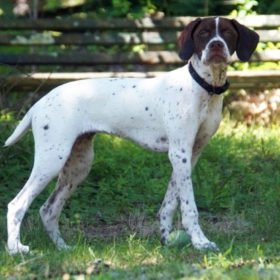 Braque Francais (Pyrenees)
Braque Francais (Pyrenees)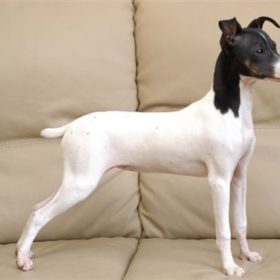 Japanese Terrier
Japanese Terrier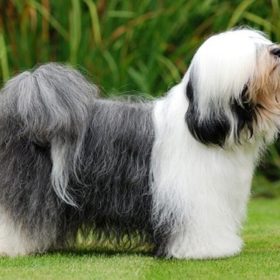 Tibetan Terrier
Tibetan Terrier
